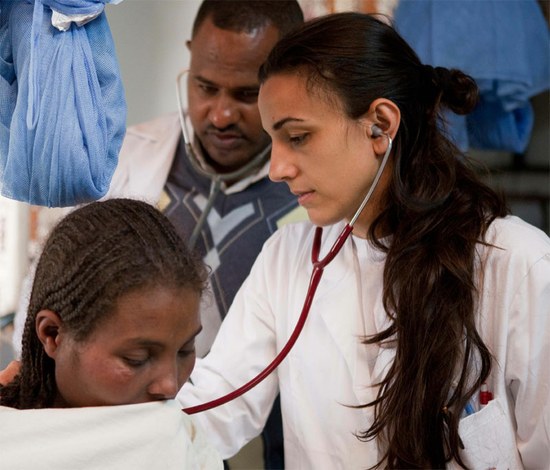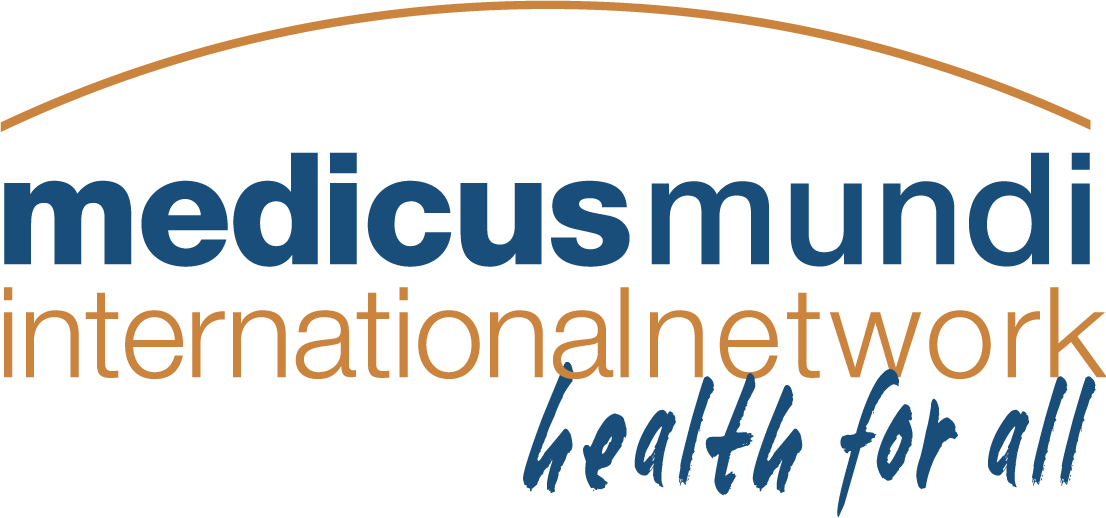 Contribution to the Annual Report 2015 of the MMI Network
Contribution to the Annual Report 2015 of the MMI Network
Tuberculosis (TB) is one of the world’s most deadly infectious diseases, striking men, women and children alike. Medici con l’Africa CUAMM is working hard to do its part in combating tuberculosis in the countries where it is active, developing and carrying out projects to diagnose and treat the disease in accordance with the respective TB control programs of each country.
“Coughing, coughing, coughing, then fever and all that sweating at night. And then losing so much weight so quickly. In the end I came to Matany Hospital from Amudat – a long, long trip. It was hard in the beginning, but now things are much better. I’m not coughing anymore and I feel strong again.” (Paolina is a patient with pulmonary tuberculosis in the TB Ward of Matany Hospital).
The World Health Organization (WHO) estimates that in 2014 some 9.6 million people fell ill with the disease worldwide and more than 1.5 million died from it, including 890,000 men, 480,000 women and 140,000 children. 29% of all TB cases are found in Africa, which has the world’s highest incidence and mortality per capita for the disease.
In 2015 in the 18 hospitals where CUAMM is active in Africa, some 10,000 people underwent screening for tuberculosis; around 2,500 patients were confirmed positive, 1,000 of whom were found to be putting the communities they lived in at risk for contagion.
“What we’re doing here is but a drop in the sea, but where we work, in the areas of greatest need, finding and treating tuberculosis patients in the appropriate manner can make an important difference” (Don Dante Carraro, director of Medici con l’Africa CUAMM).
In Angola, CUAMM acts as a consultant to the government on its national strategic plan to combat TB and is developing guidelines for the work done in diagnostic laboratories, the training of health workers and program supervision. In partnership with the World Diabetes Foundation, we are also carrying out an innovative research project that aims to detect diabetes in individuals already being treated for TB.
In Uganda, alongside our activities to detect and treat cases of so-called “ordinary” TB, CUAMM is also working on multidrug-resistant tuberculosis (MDR-TB), a particularly aggressive form of the disease that can require up to two years of treatment. To do this we make use of the GeneXpert system, a very effective tool for TB diagnosis especially in areas with scarce resources.
“For me TB has meant staining lots and lots of slides as I look for mycobacterium, and deciding lots of people’s treatment with a ‘+’, ‘++’ or ‘+++’. GeneXpert machine is very easy to use, a sort of printer with four cartridges that can identify Mycobacterium tuberculosis DNA as well as resistance to rifampicin, a drug used to treat TB. You just dilute your sample and load it into the slot. After two hours you’ve got your results (with more traditional culture-based methods, it took 4 to 8 weeks)” (Simon Amei works in the Matany Hospital laboratory).
CUAMM uses GeneXpert in Ethiopia, as well. In partnership with various partners including the World Health Organization, we have launched a project there to detect latent TB infection, doing contact tracing to identify people who live or are in frequent contact with TB patients and detect other cases of the disease early on. In addition, CUAMM is working on an integrated screening project for TB, HIV and cervical cancer in Ethiopia. Indeed, TB is often associated with HIV, fueling the spread of the disease and leading to dangerous situations of co-infection that are difficult to treat both from a clinical and psychological standpoint. According to Dr. Mario Raviglione – director of the WHO’s Global TB Programme – 75% of the world’s cases of HIV-associated TB are found in Africa, and the number of deaths from co-infection is still very high.
In conclusion, TB- and HIV-related mortality rates remain extremely high, making clear the need to integrate programs to combat the two diseases in order to make treatment for both more effective.
“For me getting TB meant learning I had HIV too. I’d gotten very weak and begun coughing up blood all the time… I was nearly dead when they brought me to the hospital. They gave me lots of medicines and slowly I began to get better. It’s still not easy to accept having HIV; I’ve been worried about being ostracized when I go back home. But things are much better now and I’m glad to be alive” (Joseph is a patient with both TB and HIV who is being cared for at the Morulinga Health Centre and by the Matany Hospital’s TB Team).
In 2014 the World Health Assembly adopted its new global tuberculosis strategy, the “End TB Strategy”. Underpinned by a vision of “a world without tuberculosis”, the strategy aims to eliminate the disease worldwide. It is based on three main pillars that outline the key interventions that need to be made.
The first pillar calls for a patient-centered approach focused on high-quality early diagnosis, treatment and prevention of TB. Among its components are diagnosis and treatment both of TB (including MDR-TB) and of HIV infection, screening, management of co-morbidities (including HIV infection) and administration of the BCG vaccination to newborns.
The second pillar calls for the adoption of TB-sensitive and TB-attentive health policies that are buttressed by strong health and social systems. Specifically, it highlights the need for adequate financial resources to be committed for TB care and prevention, the engagement of communities, civil society organizations and the private sector, the use of efficient notification systems and the appropriate use and quality of medicines.
“For me, TB meant taking lots of medicines for a very long time, but never getting any better, and then starting again and still not getting better. […] But TB has also meant getting to know the doctors and nurses working at Matany Hospital. They’ve taken care of me and even helped me with food and transport. […] Anyway, I went through some very hard times and I often thought about just giving up. But then I started to get better and to put on weight, and I even went back to work, selling tobacco.” (Lino is being treated for Multidrug-Resistant (MDR) TB at the Iriiri Health Centre; he’s looked after by the Matany Hospital’s TB Team).
The third and final pillar calls for intensified research, both basic and operational, to ensure the development of innovations and make them rapidly available and widely accessible.
According to the WHO’s estimates, adopting and implementing the End TB Strategy on a global scale would lead to a much faster decline in the TB incidence rate, with a 90% reduction in the number of new cases of TB and a 95% reduction in deaths from TB by 2035. At the same time, TB patients and their families would no longer run the risk of facing catastrophic costs due to the illness.
“TB is the quintessential disease of poverty, and helping to prevent and treat it means not just improving health conditions but also tackling the social injustice faced by a poor people such as the Karimojong.” (Currently a CUAMM JPO at Matany Hospital, Nicola Cocco is training to be an infectious disease doctor).
TB is a disease that must be prevented.
And tracked down. And cured.
Let’s unite to end TB.
- More information: www.mediciconlafrica.org
Contribution by Doctors with Africa CUAMM to the Annual Report 2015 of the MMI Network
